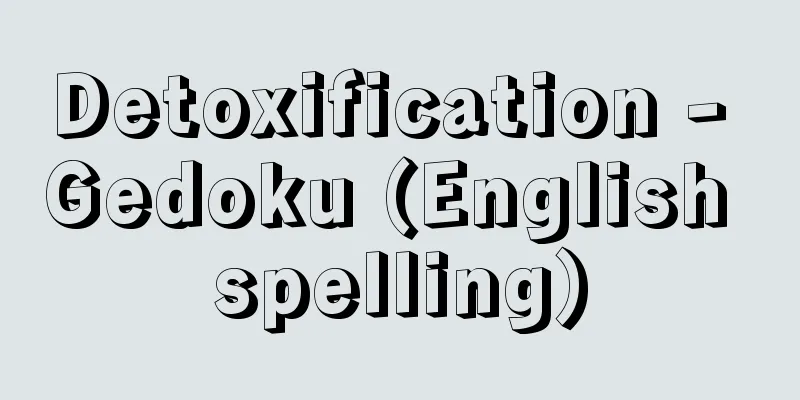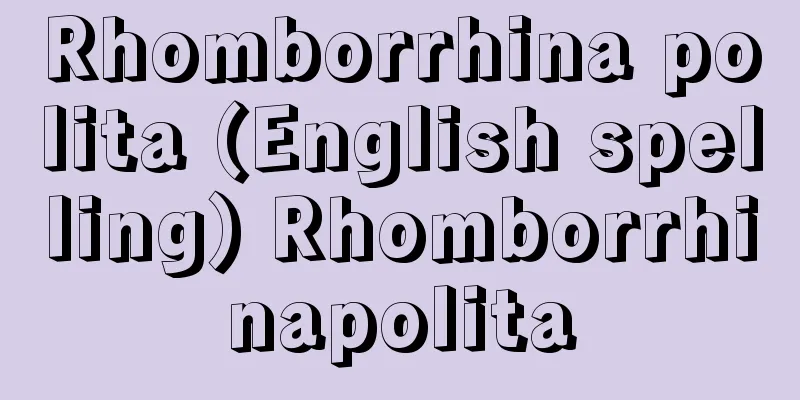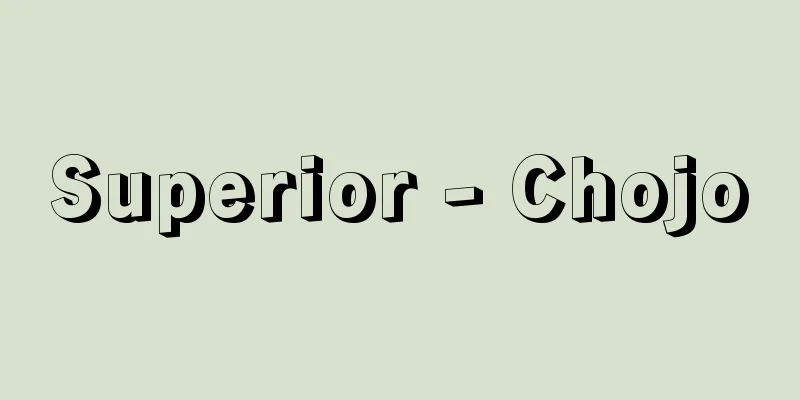Detoxification - Gedoku (English spelling)

|
This refers to a certain biochemical reaction that renders toxic substances harmless to the body, that is, changes the structure of the substance into one that has less effect on the body or is easier to excrete. The environment surrounding life is diverse, ranging from simple molecules such as oxygen to giant molecules such as nucleic acids and proteins. In appropriate amounts, these substances are either necessary or harmless to cells. However, if present in excess, they can inhibit the normal functioning of cells. The amount of a substance that can be toxic to a living organism varies depending on the species, but is roughly the same for organisms of the same species. However, strictly speaking, there are exceptions. For example, normal human cells have phenylalanine hydroxylase, which catalyzes the reaction that converts phenylalanine to tyrosine, but cells of people with phenylketonuria do not have this enzyme, so phenylalanine accumulates in the body and is converted to phenylpyruvic acid, phenyllactic acid, and phenylacetic acid. Phenylacetic acid combines with glutamine in the liver to become phenylacetylglutamine, which is excreted in the urine. Of these, phenylpyruvic acid, a keto acid (ketonic acid), is also detected in the urine, which is why the condition is called phenylketonuria. Such metabolic disorders impair the normal development of intelligence in infants, but feeding infants low in phenylalanine protein until age 6 can avoid this. That is, phenylalanine is a harmless amino acid in the amounts found in normal foods, but is harmful to people with phenylketonuria. Phenylalanine hydroxylase, which converts phenylalanine to tyrosine, can be said to be an enzyme that detoxifies phenylalanine. On the other hand, phenylalanine is also an amino acid necessary for protein synthesis, even in people with phenylketonuria, as long as there is an appropriate amount of it. Therefore, the amount at which a substance becomes toxic can be determined by genetic differences between individuals. The mechanism by which a substance that exists in excess of the appropriate amount and impairs the normal function of cells is converted into another harmless substance can be called detoxification. Detoxification mechanisms include (1) oxidation, (2) reduction, (3) hydrolysis, (4) conjugation, and (5) others, many of which involve enzymes. Oxidation and reduction involve oxidoreductases as well as coenzymes such as NADP. For example, the reaction of oxidizing methane series hydrocarbons and reducing nitro groups is an example. Glutathione reacts with hydrogen peroxide and organic peroxides, which are harmful by-products of aerobic life, and plays an important role in their detoxification. Glutathione peroxidase, which catalyzes this reaction, is unusual in that it has a covalently bonded selenium atom. An example of hydrolysis is carboxylic acid esters, and the reaction products are all highly polar and water-soluble. Conjugation is important in higher animals, especially humans, and takes place in hepatocytes. Conjugation includes glucuronide conjugation, sulfate conjugation, phosphate conjugation, taurine conjugation, and glycine conjugation. These are mechanisms that conjugate bilirubin and bile acids produced in the body and excrete them in bile or urine as water-soluble substances. Detoxification basically means making fat-soluble substances water-soluble and diffusing them into the aqueous solution of the cellular environment. [Teruyoshi Arima, Taro Arima, and Tamiyo Takeuchi] "Nutritional Biochemistry Experiments" edited by Saiyuki Hirota, Tsutomu Asano, Masashi Omori, Yoshihiro Okuda, Yoshiko Kadoya, and others (1997, Kyoritsu Shuppan) [References] | | | | | | | | |Source: Shogakukan Encyclopedia Nipponica About Encyclopedia Nipponica Information | Legend |
|
生体にとって有毒な物質を無害なものとする仕組み、すなわち、生体にとって作用の少ない構造にするか、あるいは排泄(はいせつ)しやすい構造に変える一定の生化学的反応をいう。 生命を取り巻く環境は、酸素のような簡単な分子から、核酸、タンパク質のような巨大分子に至るまで多種多様である。これらの物質も適当量であれば、いずれも細胞にとって必要なものか無害なものである。しかし、適当量以上あれば細胞の正常な機能を阻害することがある。ある物質が生体にとって有毒となりうる量は、生物種によって異なるが、同種の生物ではほぼ同量である。しかし、厳密にいうと例外がある。たとえば、普通の人の細胞はフェニルアラニンをチロシンに変える反応を触媒するフェニルアラニン水酸化酵素をもっているが、フェニルケトン尿症の人の細胞はこの酵素をもっていないので、体内にフェニルアラニンが蓄積し、それはフェニルピルビン酸、フェニル乳酸、フェニル酢酸に変えられる。フェニル酢酸は肝臓でグルタミンと結合してフェニルアセチルグルタミンとなり、尿中に排泄される。このうち、ケト酸(ケトン酸)であるフェニルピルビン酸も尿中に検出されることからフェニルケトン尿症とよばれている。このような代謝障害は乳児の正常な知能の発達を障害するが、フェニルアラニン含有量の低いタンパク質を6歳まで与えると知能障害は避けられる。すなわち、通常の食物に含まれる量のフェニルアラニンは無害なアミノ酸であるが、フェニルケトン尿症の人にとっては有害である。そして、フェニルアラニンをチロシンに変えるフェニルアラニンヒドロキシラーゼは、フェニルアラニンを解毒する酵素ということができる。また一方、フェニルアラニンはフェニルケトン尿症の人でも適当量あれば、タンパク合成に必要なアミノ酸でもある。したがって、ある物質が有毒となる量は個体の遺伝的違いによって決まることがある。そして、適当量以上に存在して細胞の正常な機能を障害する物質を、他の無害な物質に変える仕組みを解毒とよぶことができる。 解毒の仕組みには、(1)酸化、(2)還元、(3)加水分解、(4)抱合、(5)その他があり、その多くに酵素が関与する。酸化と還元には酸化還元酵素のほかにNADPなどの補酵素が関与する。たとえば、メタン系列の炭化水素を酸化し、ニトロ基を還元する反応がその例である。グルタチオンは好気的生活に伴う有害な副産物である過酸化水素や有機過酸化物と反応し、これらの解毒に重要な役割を果たす。この反応を触媒するグルタチオンペルオキシダーゼは、共有結合したセレン原子をもつ点がめずらしい。加水分解の例としてはカルボン酸エステルなどがあり、反応生成物はいずれも極性が大きく水溶性である。また、抱合としては、高等動物、とくにヒトでは重要で、肝細胞で行われる。抱合にはグルクロン酸抱合、硫酸抱合、リン酸抱合、タウリン抱合、グリシン抱合などがある。これらは、生体内で生成するビリルビンや胆汁酸を抱合し、水に可溶性として胆汁中または尿中に排泄する機構である。解毒とは、基本的には脂溶性物質を水溶性とし、細胞環境の水溶液に拡散させることを意味する場合が多い。 [有馬暉勝・有馬太郎・竹内多美代] 『廣田才之・浅野勉・大森正司・奥田義博・角谷嘉子他編『栄養生化学実験』(1997・共立出版)』 [参照項目] | | | | | | | | |出典 小学館 日本大百科全書(ニッポニカ)日本大百科全書(ニッポニカ)について 情報 | 凡例 |
Recommend
Lake Utsuko
…The valley between Mount Fuji and the Misaka mou...
bokmål (English spelling) bokmal
...However, a separate language, Landsmål, was fo...
Masayo Asukai
A poet of the early Muromachi period. His first n...
Pavo cristatus (English spelling)
…there are two species in the genus Peafowl: the ...
Odaka Castle
Hirayama Castle ( Hirayamajiro ) was located in Mi...
Passing through the womb - Passing through the womb
A name given to places where one passes through na...
Supreme law - saikōhōki (English spelling)
It generally refers to a constitution, meaning a ...
Titanium sulfate - Ryusan Titanium (English spelling) titanium sulfate
Titanium sulfate is known to exist in compounds wi...
Echigo sickle
Sickles are produced mainly in Nishikan Ward, Niig...
Ganda tribe - Ganda (English spelling)
An ethnic group of the Interlake Bantu peoples liv...
Itami sake - Itami sake
<br /> Sake made in the area around Itami Ci...
Narcissus pseudo-narcissus (English spelling) Narcissus pseudonarcissus
…[Hiroshi Aramata]. … *Some of the terminology th...
Recycle - Recycle (English spelling)
Recycling is the process of effectively using unn...
Lythrum salicaria (English spelling)
…[Murata Gen]. … *Some of the terminology that me...
Rotary instrument - Kaitengi
⇒Gyroscope Source: About Shogakukan Digital Daijis...









